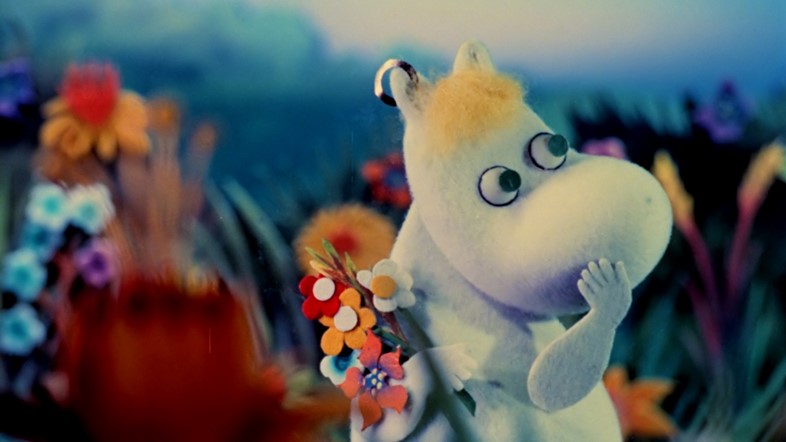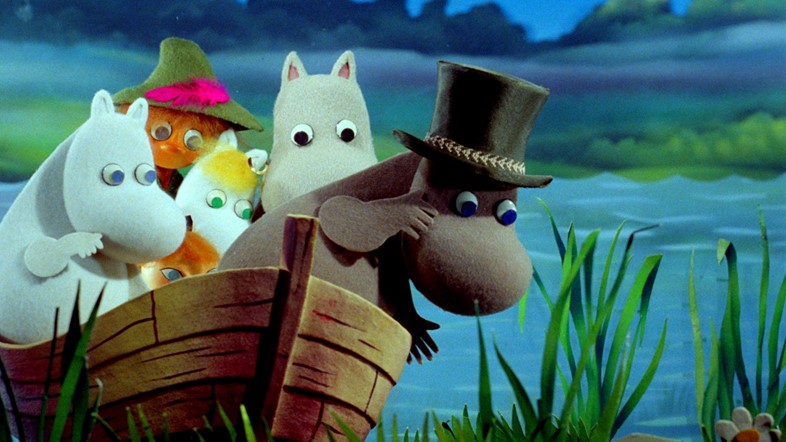Everything you ever needed to know about the Moomins
Moomin and Midsummer Madness, the animated children’s movie based on the lives of the Moomin characters, will run at the ICA Cinema this weekend to celebrate the centenary of author Tove Jansson. Celebrations will continue throughout the year, with the New York Review Books releasing Jansson's The Woman Who Borrows Memories, and an animated feature film, Moomins on the Riviera, premiering in Sweden this October. To celebrate the rerelease of Moomin back to the big screen, we present our top 10 Moomin facts.
1. Jansson claimed that she drew the first Moomin after an argument with one of her brothers about Immanuel Kant, which led to her sketching the “ugliest creature imaginable” on the toilet wall, writing “Kant” beneath her illustration. This ugly creature eventually morphed into a friendly and plumper version – the Moomin figure we are now familiar with.

2. The Moomin figure made an appearance for the first time in public as an emblem in an anti-Hitler cartoon published by Jansson in the late 1930s.
3. Moomintroll received his first taste of international success in 1954, when London’s Evening News began publishing a Moomin comic strip drawn by Tove Jansson and later, her brother Lars.
4. Before long this comic strip began to take its toll on Jansson, constantly needing new ideas to sustain it, which left her little time for painting and writing. She wrote in her notes, “Those damn Moomins, I don’t want to hear about them any more. I could vomit on the Moomintrolls”.
“Those damn Moomins, I don’t want to hear about them any more. I could vomit on the Moomintrolls” — Tove Jansson
5. The theme park Moominworld was opened in 1993 in Finland. There are now plans for a second Moominworld to be built in Japan, opening in 2015.
6. Both of Jansson’s parents were artists. The bohemian life of their Helsinki studio and the summers spent on a small island on the Gulf of Finland form the background of the Moomin books.

7. Jansson used the books to express her inner emotions. Her anxiety and grief were expressed in the first two books – she was depressed during the war and this was mirrored in the titles which both tell of catastrophe. Jannson described the creatures having to leave their homes, similiar to the evacuations she experienced in Helsinki during the war.
"Many of Jansson's characters for the books were based on real people in her life"
8. Many of Jansson's characters for the books were based on real people in her life. Thingumy and Bob represented Jansson and the married Vivicka Bandler with whom she had a brief and passionate affair. Homosexuality was illegal in Finland, meaning Jansson’s affairs had to be kept secret. But again she channelled her emotions into her books. The two characters representing Jansson and Bandler were always hand in hand, and had a suitcase that they wouldn’t tell anyone what was in it, just referred to it as “the content”. Inside the suitcase was a ruby – symbolic of their love – and The Groke – a large grey, creature that freezes everything it touches – chases the pair as it is also seeking love. The Groke could be viewed as the authority that oppressed Jansson from being public with her feelings, as she constantly runs and hides her sexual orientation.

9. Another character taken from Jansson’s own life was Too-Ticky, who was created in the image of her partner Tuulikki Pietila. Too-Ticky gave Moomintroll guidance through winter and the hard times.
10. Jansson’s final Moomin book, Moominvalley, was written in 1970. Its mood is reflective of the grief the author felt after her mother's death. Jansson created a new character based on herself called Toft, who, upon arriving at Moominhouse, finds that no one is home.
Moomin and Midsummer Madness will screen at ICA Cinema on Saturday 9 and Sunday 10 August and is programmed to coincide with the ICA's current display Tove Jansson: Tales From The Nordic Archipelago in the Fox Reading Room. For details of further screenings of Moomin and Midsummer Madness across the UK, click here.
Text by Annabel Gibson
